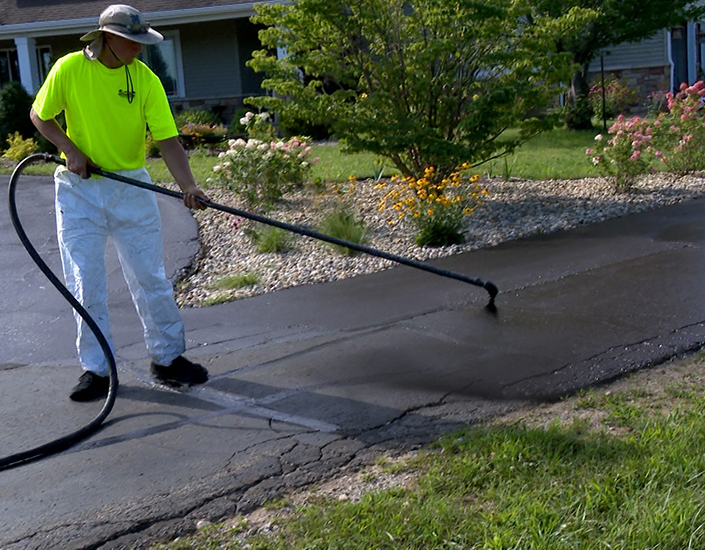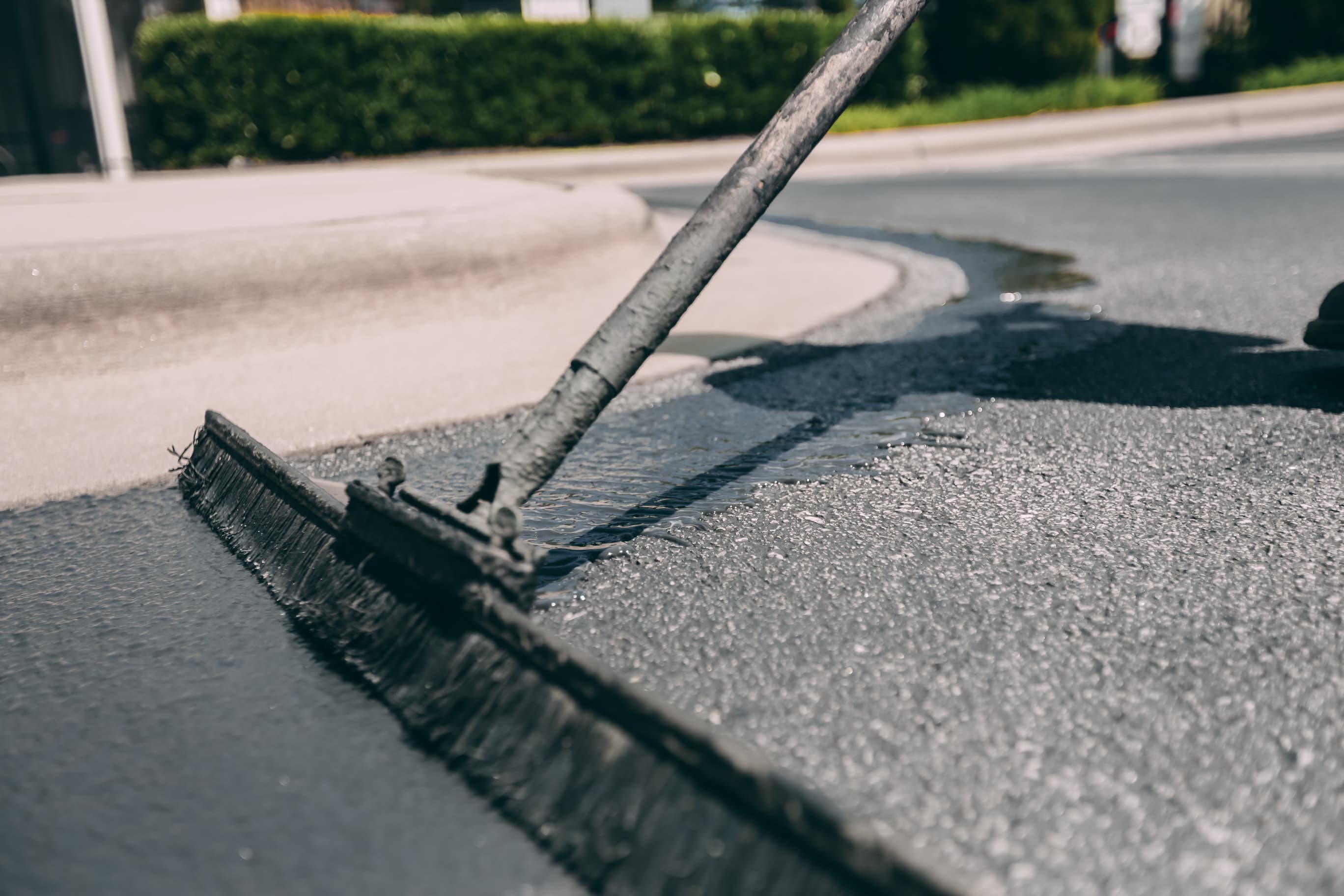Optimize Financial Investment Returns: Angled Car Park Excellence with Asphalt Sealing
Optimize Financial Investment Returns: Angled Car Park Excellence with Asphalt Sealing
Blog Article
Hot Mix Asphalt: A Sustainable Remedy for Pavement
Hot Mix Asphalt (HMA) has actually arised as a leading sustainable selection for sidewalk services, providing a myriad of innovative innovations and ecological benefits. Its capability to reuse products and minimize energy intake offers an engaging instance for its fostering in roadway building and construction tasks. The long-term performance and durability of HMA make it a recommended choice for framework development. As the demand for environmentally friendly construction practices expands, discovering the nuances of HMA's sustainability can provide useful understandings right into the future of pavement remedies.
Environmental Benefits of Warm Mix Asphalt

Furthermore, Warm Mix Asphalt assists to alleviate city warmth island impacts. Its dark color absorbs sunlight, decreasing the amount of heat reflected back right into the ambience compared to lighter-colored sidewalks. This can reduce ambient temperatures in urban areas, lowering the need for cooling and inevitably lowering power intake.
On top of that, Hot Mix Asphalt adds to boosted stormwater monitoring. Its permeable nature permits water to infiltrate the pavement and reenergize groundwater products, reducing drainage and the danger of flooding. These ecological advantages make Warm Mix Asphalt a lasting choice for leading roads and freeways.
Energy Effectiveness in HMA Manufacturing
Is energy performance a crucial factor in the manufacturing of Warm Mix Asphalt (HMA)? Power plays a significant duty in the manufacturing of HMA, affecting both price and environmental sustainability. One vital facet of power performance in HMA production is the use of cozy mix asphalt (WMA) innovations.
Moreover, advancements in plant technologies have actually led to even more energy-efficient HMA production procedures. By optimizing power usage in HMA production, the market can reduce its carbon footprint while keeping premium pavement materials.
Recyclability of Warm Mix Asphalt
The recyclability of Hot Mix Asphalt (HMA) is a critical element of its sustainability and long-lasting ecological impact. HMA is just one of one of the most recycled materials in the United States, with over 100 million lots of redeemed asphalt sidewalk (RAP) being recycled yearly in brand-new sidewalk building and construction. Reusing HMA uses numerous ecological advantages, such as decreasing the need for virgin materials, reducing energy intake throughout manufacturing, and decreasing the quantity of waste sent to land fills.
The process of recycling HMA includes grating the existing pavement, crushing it right into smaller pieces, and mixing it with brand-new aggregate and asphalt binder to create a recycled mix. This recycled mix can usually do in addition to or perhaps better than conventional HMA, while requiring fewer resources and producing lower greenhouse gas discharges. By incorporating RAP right into brand-new pavement projects, roadway companies can preserve natural deposits, lower expenses, and decrease the environmental footprint of road construction and maintenance tasks. Overall, the recyclability of HMA plays a considerable role in promoting sustainable methods within the sidewalk industry.

Long-Term Performance of HMA
Asphalt pavements show resilience and strength over an extensive duration, reflecting the long-term performance of Hot Mix Asphalt (HMA) The longevity of HMA can be credited to its capability to hold up against rush hour tons, harsh weather, and the impacts of aging. Researches have revealed that properly designed and properly constructed HMA pavements can last for twenty years or more with normal maintenance. The key to taking full advantage of the lasting site here efficiency of HMA depends on utilizing premium products, following best methods in building, and executing efficient upkeep methods. Correct drainage, regular evaluations, and timely fixings are essential for protecting the structural honesty of HMA sidewalks over time. In addition, improvements in HMA modern technology, such as using polymer-modified binders and cozy mix asphalt, have actually additionally enhanced the durability and long life of HMA pavements. By prioritizing quality building and construction and upkeep techniques, HMA continues to confirm itself as a sustainable and affordable option for resilient sidewalk facilities.

HMA: Longevity and Sustainability
Demonstrating both toughness and sustainability, Hot Mix Asphalt (HMA) has become a foundation in the building and construction of lasting sidewalk infrastructures - angled parking. HMA's resilience stems from its capability to stand up to heavy lots, extreme weather condition problems, and high website traffic quantities, making it a trustworthy option for streets, highways, and airport runways. The make-up of HMA, which typically includes accumulations, binder, and filler, plays a critical role in boosting its longevity and resistance to tear and use
Furthermore, HMA's sustainability depends on its recyclability and energy-efficient manufacturing process. The ability to recycle reclaimed asphalt sidewalk (RAP) in new HMA blends decreases the demand for virgin materials and reduces the environmental effect of pavement construction and upkeep. Furthermore, the power performance of producing HMA depends on its reduced blending temperatures compared to various other sidewalk products, bring about lowered energy usage and greenhouse gas discharges.
Verdict
In verdict, hot mix asphalt (HMA) uses a sustainable remedy for pavement with its environmentally pleasant attributes. HMA's recyclability, power performance in production, and long-term durability make it an eco-friendly selection for road construction.
HMA is one of the most recycled materials in the United States, with over 100 million bunches of reclaimed asphalt pavement (RAP) being reused yearly in new pavement construction.The process of recycling HMA involves crushing the existing pavement, crushing it right into smaller pieces, and blending it with brand-new accumulation and over at this website asphalt binder to develop a check recycled mix.Asphalt pavements show durability and durability over an extensive duration, showing the long-term performance of Hot Mix Asphalt (HMA) Furthermore, improvements in HMA innovation, such as the usage of polymer-modified binders and cozy mix asphalt, have even more enhanced the sturdiness and long life of HMA sidewalks. The capability to reuse redeemed asphalt sidewalk (RAP) in new HMA blends reduces the need for virgin products and reduces the environmental influence of pavement building and upkeep.
Report this page